In celebration of International Women’s Day, we speak with eight talented women from the creative industry to learn about their careers, their work, and their views on gender balance and diversity in the creative sector today ♀️

Lucy Cooper
Managing Director, Union Visual Effects
Lucy is MD of Union VFX. She is also Non-Executive Director of Animated Women (UK) and ACCESS:VFX. She previously worked as Head of Marketing at Foundry.

Jessica Lennox
Lighting TD, One of Us
Jessica is a Lighting TD at One of Us and Secretary of the London ACM SIGGRAPH chapter. She previously worked at Blue Zoo, Double Negative, A Large Evil Corporaton, and MPC.

Di Giorgiutti
VFX Producer/Co-producer
Di is a visual effects producer with an impressive filmography, including work on The Matrix trilogy. She recently worked on Disney’s Mulan, and has just started on Thor: Love & Thunder.

Nancy St. John
VFX Producer/Consultant
Nancy is a visual effects producer with credits on a variety of projects, from Babe and Gladiator up to Ghostbusters and the upcoming Bill & Ted Face the Music.

Niki Kehoe
Toon Boom Rigger, Blue Zoo
Niki is a Toon Boom rigger with experience at Blue Zoo, Boulder Media, Giant Animation, and more. She also acts as a mentor at ACCESS:VFX.

Kate Gabriel
3D Artist, The Mill
Kate works as a 3D Artist at The Mill. She also acts as Chair for the London ACM SIGGRAPH chapter, where she oversees activities and organizes events.

Lauren McCallum
Managing Director, Mill Film
Lauren is Managing Director at Mill Film, where she oversees strategy, brand and finanical performance, and trains and coaches diverse, talented teams.

Samantha Pedregon
VFX Artist, The Mill
Samantha is a VFX Artist at The Mill, having worked her way up from Runner. She recently worked as Asset Lead on the Apex Legends cinematic trailers.

Can you tell us a little about your journey in VFX?
Lucy Cooper: I studied Law followed by an MSc in Marketing, so not quite a natural path towards VFX! I was offered a sales job at Scottish Television, and while working there, I was seduced by the excitement of the creative industries. Back then, VFX didn’t exist in anything like the form it takes today, and my first role was not what I wanted to be doing. It did, however, instigate my move to London (I’m originally from Scotland), which was an eye-opening experience that introduced me to a whole new world of work possibilities. I quickly started a marketing role in a post-production company, and my ambitions evolved with the industry.
Jessica Lennox: At school, I wasn’t aware that I even could work in the CG industry! I loved animated film and dreamt of being an artist in some form, but I assumed that work in animated films was all based in America. It wasn’t until I went to an arts university fair, where lots of UK universities got together to show off their different courses, that I realized a career in CG was possible!
I instantly knew it was what I wanted to do, I loved the blend between technology and art, and I went on to study 3D Animation at the University of Hertfordshire. From there, I moved into 3D lighting, working at Blue Zoo on Digby Dragon and then A Large Evil Corporation in Bath on adverts for the Funko Brand. I then made a move into VFX, where I went from DNEG TV on Altered Carbon to MPC Film on the Lion King, and finally, I came to One of Us, where I have since worked on the Witcher Netflix series and other TV shows. Although my career path began in Lighting, I love learning new things and covering multiple aspects of the pipeline, so I am now a very happy 3D Generalist!
Nancy St. John: In the early ’80s, the digital revolution was taking hold in LA, so I moved there. It was the wild frontier: 3D CGI and emerging digital and computer technologies were converging in TV commercials and films. I was lucky to work for two cutting edge companies right away – Digital Productions and Robert Abel & Associates. The journey continued at Pacific Data Images and ILM in Northern California. Then VFX films took me to Australia and London and all over the world. I’ve worked with amazing filmmakers and pioneers in film and technology.
Many incredible and Oscar-winning films later, I just completed work on The Glorias about the life of Gloria Steinem, directed by Julie Taymor. I’m now working on Bill & Ted Face the Music with director Dean Parisot.

Image from The Glorias © Roadside Attractions, 2020
Di Giorgiutti: 43 years ago, when I walked out of a Sydney cinema after seeing Star Wars: A New Hope, I turned to my sister and said: “I am going to do that. I will figure out a way.” Little did I think I would land where I am today.
It was my gut instincts that landed me onto my first real big Hollywood experience – The Matrix. A call came in while I was in London, and within a week I was off to Sydney to join a show which had already been shooting three weeks. By the time Matrix entered my life, I had worked 13 years in the industry in Sydney, and had been living and working in London for five years. I owned an Avid company as well as working freelance, VFX Producing for Rushes, which was owned by Sir Richard Branson at the time. Since the Matrix, I’ve worked on many different films, most recently Disney’s Mulan. I’m currently working on Thor: Love and Thunder.
Niki Kehoe: I received my Bachelor’s degree in 2D animation from Ballyfermot College in Dublin, then landed my first industry job at Kavaleer Productions, working in 2D animation. I moved around the industry in Dublin, working as a freelancer and at Monster Productions and Treehouse Republic. I then moved to London to work at Doodle Productions on Messy Goes to Okido. I also completed some freelance work for Jam Media before moving back to Ireland to work with Giant Creative.
In 2016, I joined Boulder Media as a Toon Boom Harmony rigger. I was there for two and a half years, before moving back to London to work as a rigger with Blue Zoo Animation on their first 2D TV show, which has been amazing! Next, I will move to Blink Industries to work on their first 2D TV show in a pipeline role.
Kate Gabriel: I’m from the Czech Republic, where I grew up as a very creative child, dreaming of one day becoming an artist. I studied furniture construction at high school and later Interior Design at university. That’s when I started experimenting with 3D software. My career in film and TV production began in 2011 in Iceland, where I worked as a Junior Lighter on the full-CG stereoscopic feature film Legends of Valhalla: Thor. I remember one of the previews in the cinema and seeing my shot on the big screen. I felt butterflies, realizing how many people would see it in the cinema!
I finished my Master’s degree in Interior Design but spent a lot of time remotely freelancing as a 3D generalist for clients in Finland. When I finished my studies, I created my showreel and submitted it to studios all around the world. I heard back from Blue Zoo Animation and went to London to work on Digby Dragon in the lighting and comp department. Afterward, I joined the commercial department at MPC.
I now work as a 3D Artist at The Mill. I absolutely love working in advertising; I enjoy the dynamic challenge each project brings. I’m learning new things every day.

Samantha Pedregon, VFX Artist, The Mill
Samantha Pedregon: Getting into the industry was challenging. My demo reel needed work, so people weren’t hiring me, but I needed the experience to get better! Unpaid internships weren’t ideal, but I was desperate to learn and improve. After a few years of jumping around smaller studios and honing my craft, my friend had told me about The Mill and the runner positions they offered.
As a runner, I was part of the client services team that kept the studio running. That involved anything from going into suites with clients to take care of food/drink needs, running errands for projects, arranging team lunches, and more. I was involved with a lot of small tasks, but being a runner also helped me to meet a lot of people in different departments. I made friends in CG, and after three months they requested my help on a project during the busy Super Bowl season. They realized I had more than just beginner-level skillset! I proved myself on that job and was fortunate enough to stay in a Junior VFX Artist role. In this position, I contributed to background assets and camera tracking. That gave me a great foundational understanding of the creative process, which came in hugely beneficial following a promotion to my current role of VFX artist.
Kate and Jessica, could you please provide a little context around your roles at the London ACM SIGGRAPH Chapter and what they entail?
Kate Gabriel: London ACM SIGGRAPH is a non-profit organization comprised of volunteers working in the computer graphics industry in London. Our goal is to bring exciting, relevant events to our local industry in London. Our dedicated team of industry professionals host events about new technology, animation, and VFX throughout the calendar year. All events are free for everyone to attend.
I joined the board in 2015 and became a Chair after the annual officers’ vote. In my role as a Chair, I oversee everyone in the Chapter. I am responsible for building new partnerships with companies, universities, and other non-profit organizations, as well as reaching out to potential partners, sponsors, and event opportunities.
I’m very proud of the London ACM SIGGRAPH Chapter team and the events we have accomplished. All the work we put into hosting those events is taken from our own free time, and we don’t get paid for it. It is hugely rewarding, though.
Jessica Lennox: I am Secretary at the London ACM SIGGRAPH chapter. My work here began when I met the London ACM SIGGRAPH chair, Kate, while at Blue Zoo. I started off helping out, but over the years, I have grown more and more invested to the point where I am now a part of the board. Being the Secretary entails organizing events, meeting with sponsors/companies, and managing the admin side, such as any forms/reports needed to keep the charity running, as well as taxes! It’s a lot of voluntary work, but the events we help run in London are fantastic and make it so worth it. The fact we can make these events free thanks to our wonderful sponsors is such a massive benefit for both professionals in the industry and students looking to break into it!

Jessica Lennox, Lighting TD, One of Us & Secretary, London ACM SIGGRAPH
Do you think there has been an improvement in attitudes around diversity and gender balance? How have things changed from your perspective over your time in the industry?
Lucy Cooper: My experiences as a woman in the industry have certainly become a lot more palatable as my career has progressed. When I first started working, it was not unusual to be hit on or made to feel very uncomfortable at work or work social events. It felt like you’d be seen as causing a fuss and overreacting if you spoke up about it. I was in some pretty uncomfortable situations in my 20s that I definitely wouldn’t tolerate now. Still, I am optimistic that the environment has changed enough that it wouldn’t tolerate this either.
It’s been over a decade since I felt subjected to misogyny in the workplace, but as I meet lots of young women, I know that this is not true for everyone.
Still, there is a lot more awareness about the importance of diversity, and with awareness comes change. As more people at every level engage with challenging the status quo and working together, we can continue to bring more positive future change.
Females currently represent 28.7% of the VFX industry in a population that is 51% female. This number is a slight increase on the previous year, where the figure was 27%. However, in the same time frame, the gender pay gap among the most prominent players in our industry has risen from 24% to 29%!
More women are entering the industry, and I now have a 40% female staff at Union VFX. We’re still underrepresented in senior creative and tech roles, as well as senior management, so there is plenty of work to do.
Sustainable change is a long game. We need to raise awareness and encourage people to think about joining our industry. Once we have a spark of interest, we need to nurture that and make sure candidates can acquire the right skills. And once they’re in, we need to treat them as individuals, ensuring they have the support required to address the challenges they face so that they can achieve their goals.
Jessica Lennox: There have been improvements, yes. I have never really thought of myself as different from anyone I work with, so I often don’t realize it, but when you do look around and take it all in, you can easily perceive there are more men than women on the artist side. I certainly think that we are growing in terms of female artists, however more female leads and supervisors are needed. You see it so much at award shows when the VFX teams go up to collect their accolades, and they are often all white males, and that needs to change. Personally speaking, I want to move up into more senior roles.

Di Giorgiutti, VFX Producer/Co-producer
Di Giorgiutti: Since 1980, when I started as the only female PA at a production company in Sydney, there are most certainly a LOT more women in the industry! There is now definitely a good deal more inclusion for women in all sorts of VFX roles, and for a long time now, I’ve personally felt a complete acceptance that women are as tech-savvy and as creative as our counterparts.
We’ve seen a change for the better in terms of women’s acceptance in VFX. Still, perhaps we need to look at how to create more awareness to get more women interested in VFX and the many various roles available to them, be it techy, creative, or management.
Nancy St. John: Most of my colleagues come with degrees in computer science, math, physics, or engineering. They’re the smartest and the brightest. Absolute superstars. However, what Sports have taught me is that even a team with all-stars can’t win unless they learn to work as a team. Balancing female and male qualities in team structures helps create happier people who can be creative in a safe environment. Everyone can bring their superpowers to the project at hand, and companies benefit.
On this International Women’s Day, I’d like to celebrate all the men and women that understand that we work better together when there are no predators in our midst, where everyone has a voice and where it is safe for all to create, focus, and thrive. I believe the VFX community has started to turn a corner. It has begun to realize that our industry advanced not only because of its technical gifts but also because of the men and women who supported our artists and cultivated successful environments in which they could create.
Niki Kehoe: The animation industry has become far more inclusive in recent years. I have worked in the industry for 10 years, and the difference over that time is undeniable. While the industry is still male-dominated in some areas, like directing and producing, there is much more of a balance in design, backgrounds, animation, rigging, and compositing. Also, in my experience, the production coordination and management roles are filled predominantly by women.
I think one of the significant changes that occurred is that more women are looking to work in the animation industry now. That has had a considerable impact on diversity. When I was in college, all of the animation course classes were mainly men. Women were very much in the minority. Now that has changed, there is more opportunity for studios to hire talented women as well as men. The industry is generally very welcoming; I believe it values talent and attitude over gender, race, religion, sexual orientation, etc.
All of this being said, I think there is still a long way to go with diversity in areas such as writing, directing, producing, and studio owners. This will all come with time, as women find their confidence and build a strong voice in the industry. In my experience, I have mostly found men to be incredibly supportive of diversity, so the change will come.

Lauren McCallum, Managing Director, Mill Film
Lauren McCallum: As more women choose STEM curriculum in addition to arts at school and in further education, the number of women entering VFX at a graduate level is increasing. At Mill Film, we’ve been able to deliver on our commitment that 40% of our artists will be women in 2019.
However, it remains a struggle to keep women at above 30% of our senior artists. We’ve found that mentorship plays a vital role here, along with visibility. These artists must see themselves reflected in the creative leaders they work with every day.
There’s a long way to go. It’s going to take time, opportunity, and a commitment to training, sponsorship, and mentorship from VFX studios to ensure these women stay in VFX and continue to advance and prove their talent. But every time a VFX studio commits to diversity targets, we get one step closer to parity.
The most important message is this: diversity is a business imperative. It does not come at the expense of talent, ever. If a startup studio can make these commitments and deliver on them, imagine how our industry could change if more of our peers did the same? As business leaders, we have the opportunity and responsibility to create a more diverse and inclusive industry. The people who create visual effects should be as diverse as the people who consume them.
Samantha Pedregon: It’s empowering to see a definite increase in female artists across the industry. For example, while working on one of The Mill’s Apex Legends projects, I joined a video call with our team in Bangalore. We realized that everyone on the call on the LA side was female! It was the first time I’ve ever had a meeting where the majority of the people on my team were female, and a solid example of just how balanced our industry has become.
Regarding the improvement in attitudes around diversity, I feel fortunate in that I’ve always worked in places that support a positive atmosphere and naturally diverse staff. I do feel the industry has opened its arms (and minds) to accepting all cultures and ideas. As someone who is always open to listening/watching foreign entertainment (K-pop and anime), seeing Parasite win Best Picture at the Oscars was a great moment and one that shows that the first steps toward “breaking the norm” are already happening in the industry. It’ll just be a matter of time before “diverse” is the new normal.
Kate Gabriel: The industry is definitely more inclusive and diverse than previously. There is more consensus around the idea that everyone should have equal opportunities based on their skills and talent, not based on their gender, ethnicity, or cultural traditions.
When I lived in the Czech Republic, ten years ago, people would put you often in a box, telling you this is what you should or shouldn’t do, sometimes because of your gender. I was told at one company that 3D wasn’t for women. The good news is that I can’t imagine anyone would say such a thing today.
I’ve never had a bad experience in London, but I’ve been in some situations that I found difficult because I was the only girl present. I learned that you need to be brave and look confident, even if you feel the opposite! We could also benefit from getting more women into leading positions and working as supervisors. Regardless, everything is heading in the right direction. Hopefully, the younger generations won’t even notice an issue!

Kate Gabriel, 3D Artist, The Mill & Chair, London ACM SIGGRAPH
What do you feel that you or others can do to help achieve greater gender balance in the industry?
Niki Kehoe: The day-to-day way I seek to advance the role of women in the animation industry by doing my job to the very best of my ability. If we want to advance the role of women in the industry, we need to show our ability to deliver excellent work!
And it doesn’t stop at great art. We also need to show how comfortably we work in teams or on our own initiative; we need to be generous with our time and knowledge; we need to exhibit a positive attitude; we need to push ourselves and keep striving to try new things. We need to lead by example so we can inspire the next generation of young women coming into the industry to dream big! I bring as much of that as I can to my job every day.
In my personal time, I work with Animated Women UK. I am their social media manager, so I am always on the lookout for news and stories of inspiring women in the animation and VFX industries that I can share across our network. I am also mentoring a young woman through the ACCESS:VFX support network.
Lucy Cooper: I’m a non-executive director of Animated Women UK, which runs a unique program every year called The Helen North Achieve Program. This program takes women from all career stages and works with them collectively to develop a greater understanding of how to steer their careers in the right direction – all within a supportive network of like-minded, female professionals.
I’m also on the board of ACCESS:VFX, who are doing a huge amount of proactive outreach to raise awareness of careers in the VFX industry. They support young people from all backgrounds through their innovative Slack-based mentoring scheme.
Practical initiatives like this can help to make our industry better represent the world we live in – not just in terms of male/female diversity, but with broader representation across the board.
Creating a positive working environment where everyone feels empowered to have an opinion and do the right thing is also critical to making everyone feel welcome and valued.
Lauren McCallum: As a manager, I focus my time as a mentor for women in VFX. I paid particular attention to those talented women looking for sponsorship into their first management role and particularly those who rose up from the position of runner, as I did.
I am also active in Women in Animation’s Montreal chapter, along with ACCESS:VFX. These support networks play a crucial role in increasing access and gender parity in VFX, animation, and games, where women still make up less than 35% of the creative workforce. As a value-driven individual, I see it as my critical responsibility to lift up other women in VFX via these initiatives. I want to provide them with a platform from which they can prove that diversity doesn’t come at the expense of talent. Ever.
Kate Gabriel: I’m pleased to say that The Mill supports an environment that is inclusive and supportive, and that motivates people to deliver their best work. There are people from so many different backgrounds and cultures; we all learn from one another. Working with such a respectful team is fantastic.
We carry the same attitude through to our ACM SIGGRAPH Chapter, regarding both women and all diversities. Our board comprises individuals from all around the world; each of us followed our passion and landed in London. We know how hard it can be when starting out because we’ve all been through it. Therefore, we’re providing as many networking opportunities as possible for new creatives and offering advice to those who need it. The biggest reward for me is seeing the people who regularly attended our events when they were still students, who are now coming back as professionals in the industry. They received feedback on their work, got a job in the industry, and now return to help the others. That culture of reciprocity is just amazing.
Jessica Lennox: Production always has had more women than the artist side, so I do my small part in balancing things out as an artist. Also, a generalist, I am less limited to one department, which is fantastic. The best thing I can do is to be more confident and self-assured in whatever part of the pipeline I work in. It is also important to be helpful and approachable so that other women can ask you for help/advice if you need it. I admire that in other female artists.
Nancy St. John: The Producers Guild of America has a mentoring program. I actively look for the smartest young people and ask them to work with me. I promise them an education and an experience they will take with them for the rest of their lives, just as others have done for me.

Nancy St. John, VFX Producer/Consultant
Jessica, do you feel that universities are doing a good job in attracting a diverse selection of students to their visual effects courses?
Jessica Lennox: The industry is very diverse, which I love, and the universities are too. I do feel that there is an excellent level of overseas students. There definitely could be more females in CG courses, but I do think that it is improving as time goes in. The best thing universities can do is advertise and make people aware of the courses. In sixth form, I joined an all-girls grammar school where they only pushed for classic degrees (minus the art department) such as maths, English, science, etc. I was the first student to ever move into a CG degree, and I had to find that degree out myself. So, I think universities should speak with schools more directly. Awareness is key.
Can you talk a little about the diversity schemes that you currently have in place at your studio?
Lauren McCallum: We committed to and delivered on our 2018 commitment at Mill Film that 30% of our artists would be women and/or gender-neutral. In 2019, we achieved 40% female staff in our Montreal studio and 32% in our Adelaide studio. By engaging with this initiative, we learned a lot about what it takes to deliver on those commitments and the challenges we’d need to overcome.
We investigated why we weren’t able to exceed 40% in Montreal, and we learned that as our growth in headcount increased, we came up against a lack of senior female VFX artists. Therefore we started to miss our quota at the point of hiring. In Adelaide, we learned that the available senior talent was even more limited. This means that we need to actively commit to formal mentorship schemes and work with returning parents if we’re going to hit the goal of 50/50 by 2020.
Lucy Cooper: At Union, we encourage as many of the team as possible to become ACCESS:VFX mentors. We also have our senior artists mentoring the junior ones within the company.
We also supported five of our team through Animated Women’s Achieve Program. We are working with ACCESS:VFX to build apprenticeships that will help us provide opportunities to more diverse applicants.
Underpinning everything we do is our desire to be decent human beings and treat each other with respect. We appraise all candidates fairly and employ the best people for the job.

Lucy Cooper, Managing Director, Union Visual Effects
Are there any mentors or support networks that helped you in your early years?
Lucy Cooper: I was never part of any formal mentoring programs or networks. Still, I learned early on that my network would be critical in enabling me to do my job to the best of my ability, as well as providing a sounding board with people who have a broad range of experience.
I have learned so much from managers and colleagues over the years, who have been so generous with their time and are passionate about what they do. I currently mentor two young women through the ACCESS:VFX program, as well as having a close bond with my Animated Women volunteers. Outside of this, I also informally mentor two women to whom I was introduced by ex-colleagues. I find it really rewarding to offer practical support and share my experiences.
One program that I found invaluable was Cranfield University’s ‘Women as Leaders’ course that I was sent on by my Chairman at The Foundry, Karen Slatford. This program was a turning point for me, and I’d highly recommend it to anyone looking to take ownership of their career.
Jessica Lennox: Definitely the university friends I made, as we were very close as a course and still are now. Plus, I work with so many of them today! Blue Zoo is also an incredibly supportive company, and they do fantastic work working with schools.
Nancy St. John: Sherry McKenna gave me the job at Digital Productions. She was one of the first women to tackle VFX as a Producer. Bob Abel gave me the role of a lifetime as his Executive Producer at Bob Abel & Associates. At Abel’s, I worked with the most talented, creative, and amazing people. Those people have carried Bob’s legacy into the chronicles of VFX. I also worked with Jim Henson. What an incredible man. I guess you could say that every project and the people brought together to make it something amazing have left their mark on me. I’m where I am because of all of them.
Niki Kehoe: Pegbar, the animation networking group I was once part of, was a huge help. We were able to meet lots of people from the industry and make some great connections.
Once I got to London, I joined Animated Women UK, which has been a fantastic support network. I have met so many inspirational women through AWUK. I am also part of ACCESS:VFX, which is an amazing group of people. I’m a mentor at ACCESS:VFX, but the group also acts as a brilliant support network for my own individual growth.
I have also found a mentor in almost every studio I have worked in. People in the animation industry, in particular leads and supervisors, are often very generous with their knowledge, which is one of the reasons it’s such a great industry.
Animated Women UK seeks to positively support, represent, celebrate and encourage women in the animation and VFX industries in the UK.
Lauren McCallum: I’ve been lucky to work with many male and female mentors during my 16-year journey in VFX. I have, in turn, acted as a mentor myself. I’ve had the good fortune to work with Chris Mortimer, Dave Shirk, Rachel Matchett, and Joanna Capitano, during my time at Prime Focus, Framestore, MPC, and now Mill Film. Each mentor taught me a different characteristic of the manager I would go on to be. I credit their generosity, their willingness to push me outside of my comfort zone, and their belief in candid feedback as significant contributors to my success.
Kate Gabriel: As a self-taught 3D Artist who started out in Softimage, I’ve always looked to the internet for help. YouTube was my best friend! When I moved to London, however, I started attending the monthly meetups of BYOA (Bring Your Own Animation) even though I’m not an animator. Nevertheless, I met a lot of friendly people there from different companies, and we all share so much useful advice and information.
Networking is great in our industry, especially if you want to find out which studios are looking for people or what projects they recently finished. There are plenty of opportunities to network each month in London, so be sure to avail yourself of them.
Are there any colleagues or peers whose achievements you would like to shout about?
Lucy Cooper: I’d like to shout out Simon Deveraux at The Mill, who got ACCESS:VFX off the ground and has brought passionate people from competitive companies together to try to change the face of the VFX industry. People are always shocked that competitors are working together so collaboratively, but it’s in all of our best interests to attract diverse talent to join our workforce.
The benefits of looking to address diversity are wide-ranging but hard to monitor. Our workplace should reflect the world we live in and the audiences for whom we are creating. Diversity offers new perspectives and boosts creativity! We should all be striving towards it.
Jessica Lennox: My friends Kate and Boyan Georgiev need a big shout out. They contribute so much with London ACM Siggraph and the LGBTQ side of the industry! Negar Bagheri from Blue Zoo was also a fantastic female lead.
Niki Kehoe: Jessie Ilham, rigging lead on It’s Pony for Blue Zoo, is incredible – the department runs so smoothly! She is really knowledgable about rigging and has shown me lots of new techniques I had never seen before coming to Blue Zoo. Jessie juggles development work on a few projects for the studio, and she creates her own comic at the same time! She’s inspirational.
I’d also like to shout out Tena Galovic, lead character designer on It’s Pony. This was her first job out of college, and she designed almost every character on the show. I don’t know how she did it all, but she handled the responsibility with a smile on her face and a dodgy pun always ready to go!
Aoife Doyle & Niamh Herrity have also set up a studio called Pink Kong Studios in Ireland, and they are doing some really incredible work, especially in VR. I haven’t had the opportunity to work with them, but I enjoy following their work and progress a lot. Definitely check them out!

Niki Kehoe, Toon Boom Rigger, Blue Zoo
Do you have any advice for young women considering a career in VFX?
Jessica Lennox: Just go for it. I love my job, and as it is such a young industry, it feels very accepting of all kinds of people! No matter what role you move into, as long as you enjoy it and are passionate about it, you will fit right in. I think if you love what you do, then you will put the work in to succeed. In an industry where the technology continues to develop, everyone is continually learning, so we’re all in it together!
If you are nervous, however, remember you aren’t alone, and there are plenty of great people with whom you can speak. As daunting as it can seem when working in an industry with such talented people, you need to remember that everyone started out new and fresh, and felt the same at some point!
Di Giorgiutti: Whatever area of VFX you want to get into, the best piece of advice I have to offer is to show passion for your work, no matter what it entails. Alongside the interesting, fun part of the job, there is always the not-so-fun part to balance things out. Apply yourself wholeheartedly whichever part your working on and always think a step ahead. Working this way, combined with being humble, will set you up for life.
Nancy St. John: Spend time learning how things work in the industry. Ask a lot of questions and listen hard to the answers. You need to synthesize data very quickly. You also need to like people, really like people, regardless of their titles and tags. This industry is built on people and the great work that they do.
Niki Kehoe: The animation industry can be hard to break into when you’re just starting out. If you’re eager to be a part of it, focus on your craft and portfolio to impress studios. If you want to be an animator, create a strong animation showreel clearly demonstrating the 12 principles of animation. If you’d like to get into VFX, show the different FX you’ve created.
No matter which area you want to get into, show your passion for it. Work hard. Be grateful for constructive feedback. Ask for help when you need it. Go to networking events if you can. Have an online presence. Have fun!
Kate Gabriel: Stay up-to-date with the software that you use; it’s always good to be ahead of the curve. Be yourself and let your work speak for itself. Pour all of your talents into any project you’re working on, no matter how big or how small. Attend industry gatherings or conferences, too. They’re always an excellent way of making new friends. (And discovering valuable contacts, such as recruiters!)
More from the blog
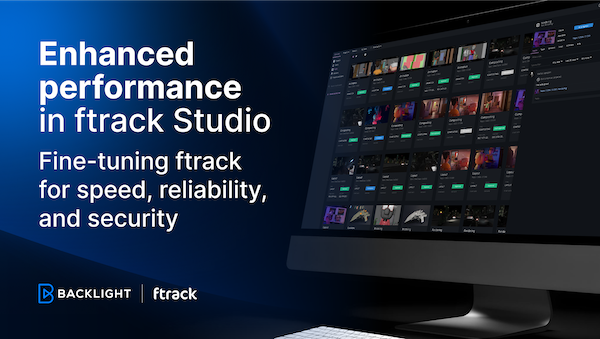
Enhanced performance in ftrack Studio: Fine-tuning for speed, reliability, and security
Chris McMahon | API, Developer, New features, Product, Productivity, Studio | No Comments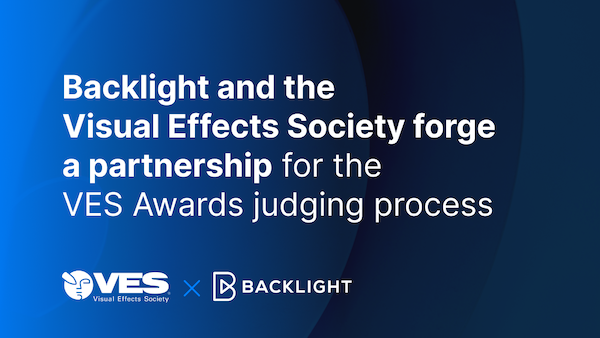
Backlight and the Visual Effects Society forge a partnership for the VES Awards judging process
Kelly Messori | Case Study | No Comments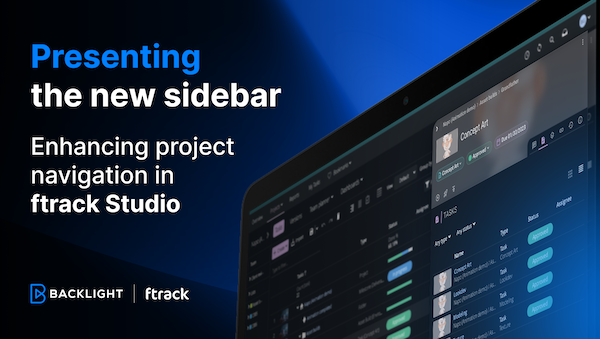
Presenting the new sidebar: Enhancing project navigation in ftrack Studio
Chris McMahon | New features, Product, Release, Studio | No Comments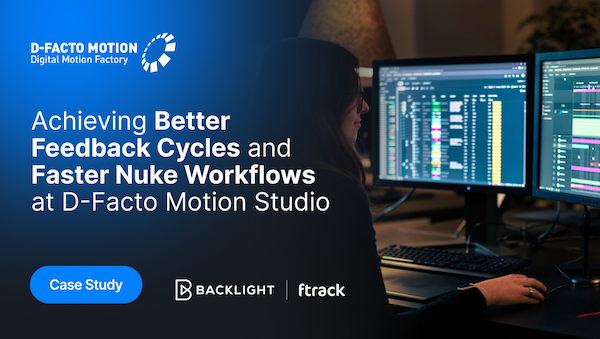
Achieving Better Feedback Cycles and Faster Nuke Workflows at D-Facto Motion Studio
Kelly Messori | Case Study, Studio | No Comments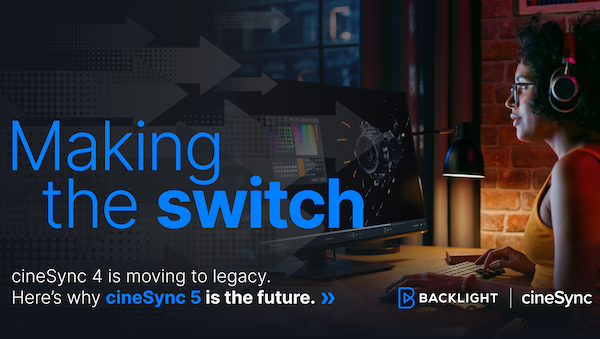
Making the switch: The transition to cineSync 5
Mahey | Announcements, cineSync, News, Product | No Comments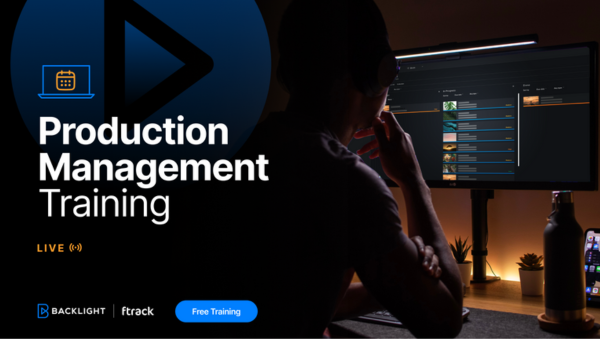
Supporting Your Studio: Free ftrack Studio Training and Office Hours from Backlight
Kelly Messori | News | No Comments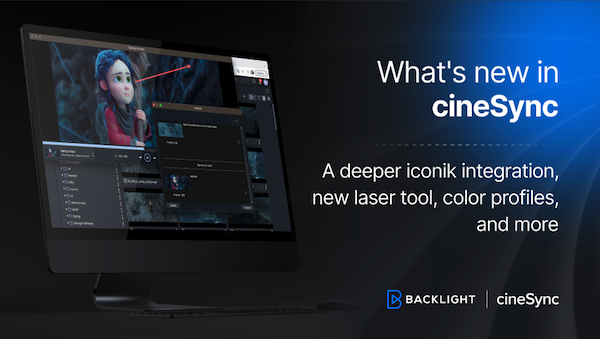
What’s new in cineSync – a deeper iconik integration, laser tool, OTIOZ support, and more
Chris McMahon | cineSync, New features, Product, Release | No Comments